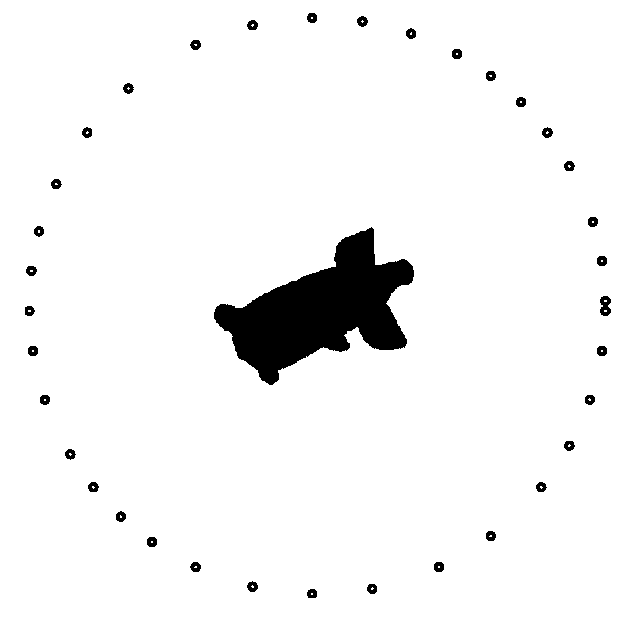
In image-based scene representation, virtual images of a rigid 3-D scene are constructed from a sparse set of reference views. Let us focus on how to select optimal set of reference views. The simplified problem is addressed when candidates for the reference views lie on a viewing circle.
Dense set of reference views (360 views) is captured by rotating the object placed on rotation table:

There is a method how to construct intermediate views inside a viewing interval from its two end views. This method is stereo + view interpolation.
Error of replacing real image by the interpolated one = appropriate "difference" between these images. (In the polar plot, radius is the error magnitude, angle is the angle of rotation, curve parameter is the distance of the interval end views.)

Using this error, the optimal set of reference views is found as the set minimizing a weighted average of this error and the number of views. For optimalization, two algorithms are used:
Dynamic programming: (left figure = selected views, right figure = lengths of intervals, the object's top view in the middle)


Interval growing/selection: (left figure = selected intervals, right figure = lengths of intervals)

